-
 Who Killed Vincent Chin: Civil Rights Activism
Who Killed Vincent Chin: Civil Rights Activism USHG 8.3.4 Civil Rights Expanded – evaluate the major accomplishments and setbacks in securing civil rights and liberties for all Americans over the 20th century.
-
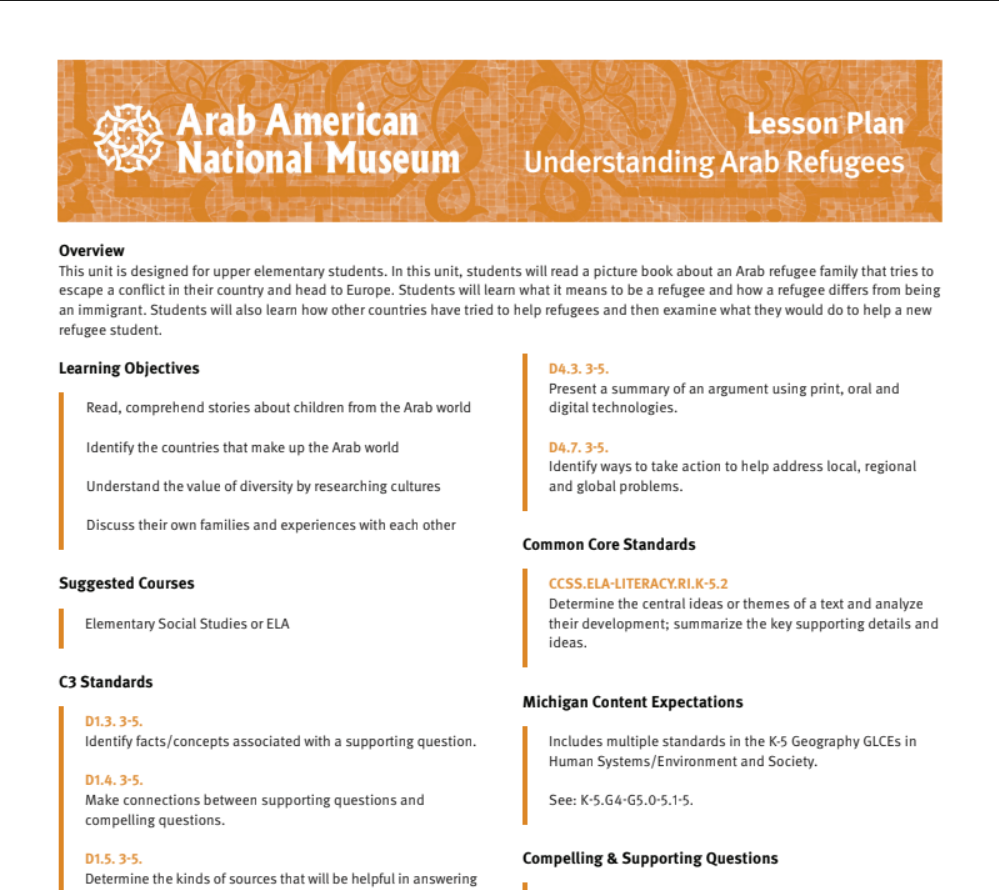 Understanding Arab Refugees Unit Plan
Understanding Arab Refugees Unit Plan
-
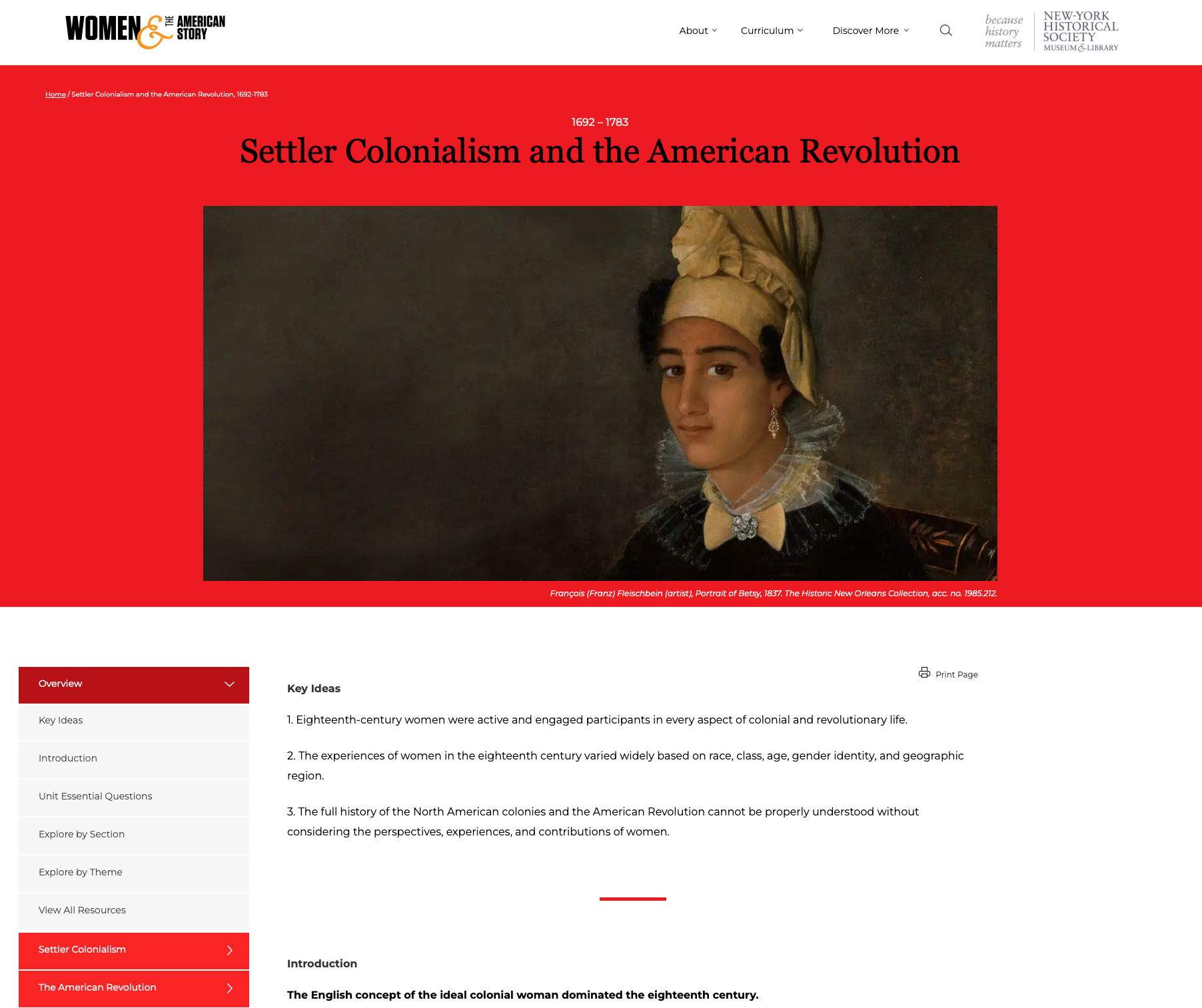 Settler Colonialism and the American Revolution: Women and the American Story History Unit (1692-1783)
Settler Colonialism and the American Revolution: Women and the American Story History Unit (1692-1783) Content wise, this unit goes best with 3rd grade history and 5th grade USHG Eras 2 and 3. There are opportunities for geography, economics, and civics integration. Which standards are best will depend on the resources you include, how you include them, and the grade you teach. That said, we do recommend these resources for all grades to help develop historical thinking and inquiry skills described in the K - 12 standards.
-
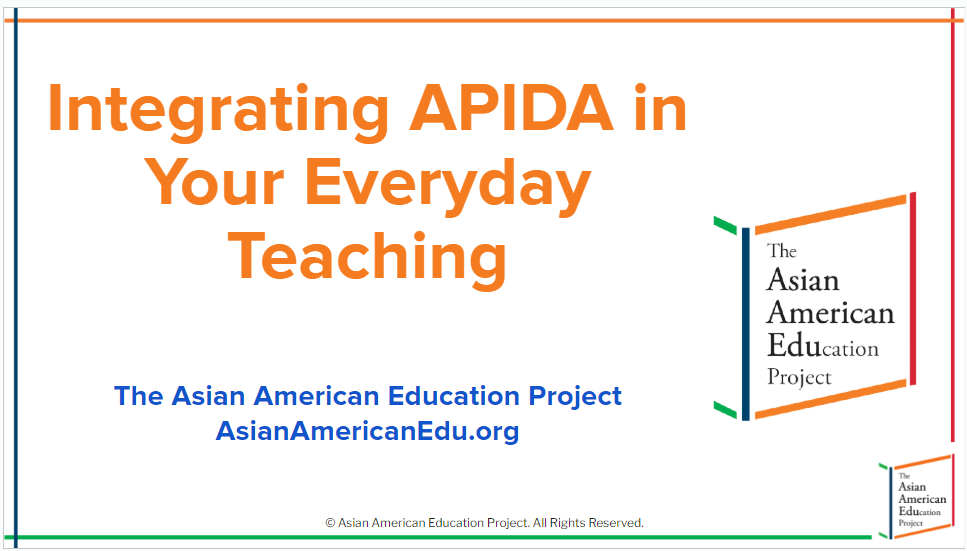 Integrating Asian Pacific Islander Desi Americans (APIDA) in Your Everyday Teaching
Integrating Asian Pacific Islander Desi Americans (APIDA) in Your Everyday Teaching These slides are from a webinar by the Asian American Education Project aimed to help teachers integrate APIDA histories into their existing teaching. The slides share examples of APIDA inclusion into existing curriculum, pedagogical strategies to do so, and reflective questions to help K-12 history teachers probe their own teaching.
Example teaching strategies/historical moments are:
- Angel Island and Ellis Island
- Japanese Incarceration during WWII, Treatment of Muslim Americans and South Asian Americans post 9/11, and U.S. Detention Facilities at the Border
- Tape vs. Hurley and Brown vs. Board
- Immigration Patterns of Southeast Asian refugees as a result of the Vietnam War
- Lue Gim Gong saves Florida's Citrus Plants
- Colonization of Hawai'i
-
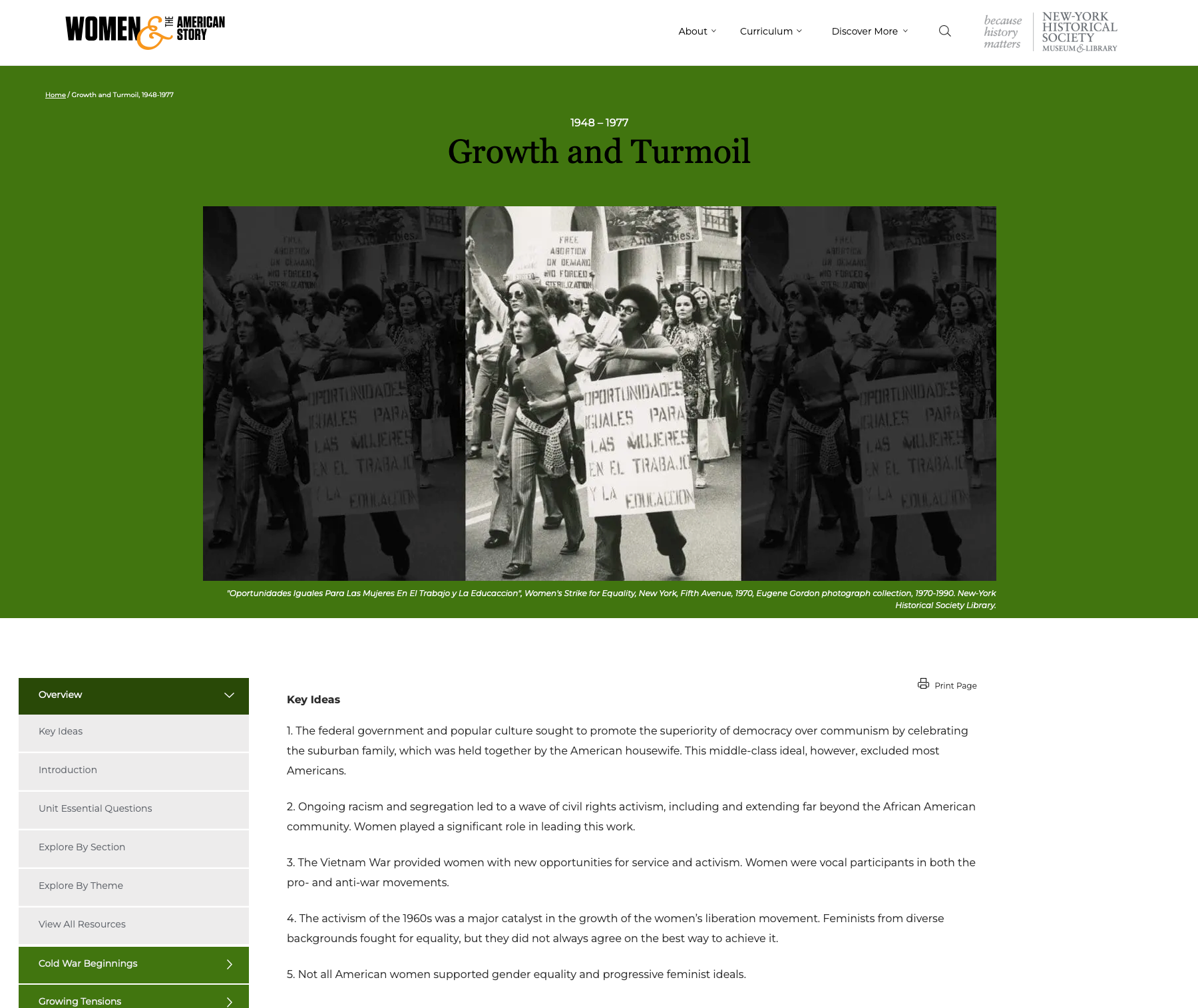 Growth and Turmoil: U.S. History Unit (1948–1977)
Growth and Turmoil: U.S. History Unit (1948–1977) Content wise, this unit goes best with High School USHG Eras 7 + 8. There are opportunities for geography, economics, and civics integration.
-
 End of the Twentieth Century Women and the American Story History Unit (1977-2001): A Conservative Turn
End of the Twentieth Century Women and the American Story History Unit (1977-2001): A Conservative Turn Content wise, this unit goes best with High School USHG Eras 8+ 9. There are opportunities for geography, economics, and civics integration. Which standards are best will depend on the resources you include, how you include them, and the grade you teach. That said, we do recommend these resources for all grades to help develop historical thinking and inquiry skills described in the K - 12 standards.
-
 Early Encounters: Women and the American Story History Unit (1492-1734)
Early Encounters: Women and the American Story History Unit (1492-1734) Content wise, this unit goes best with 3rd Grade history and 5th grade USHG Eras 1 and 2. Which standards are best will depend on the resources you include, how you include them, and the grade you teach. That said, we do recommend these resources for all grades to help develop historical thinking and inquiry skills described in the K - 12 standards.
-
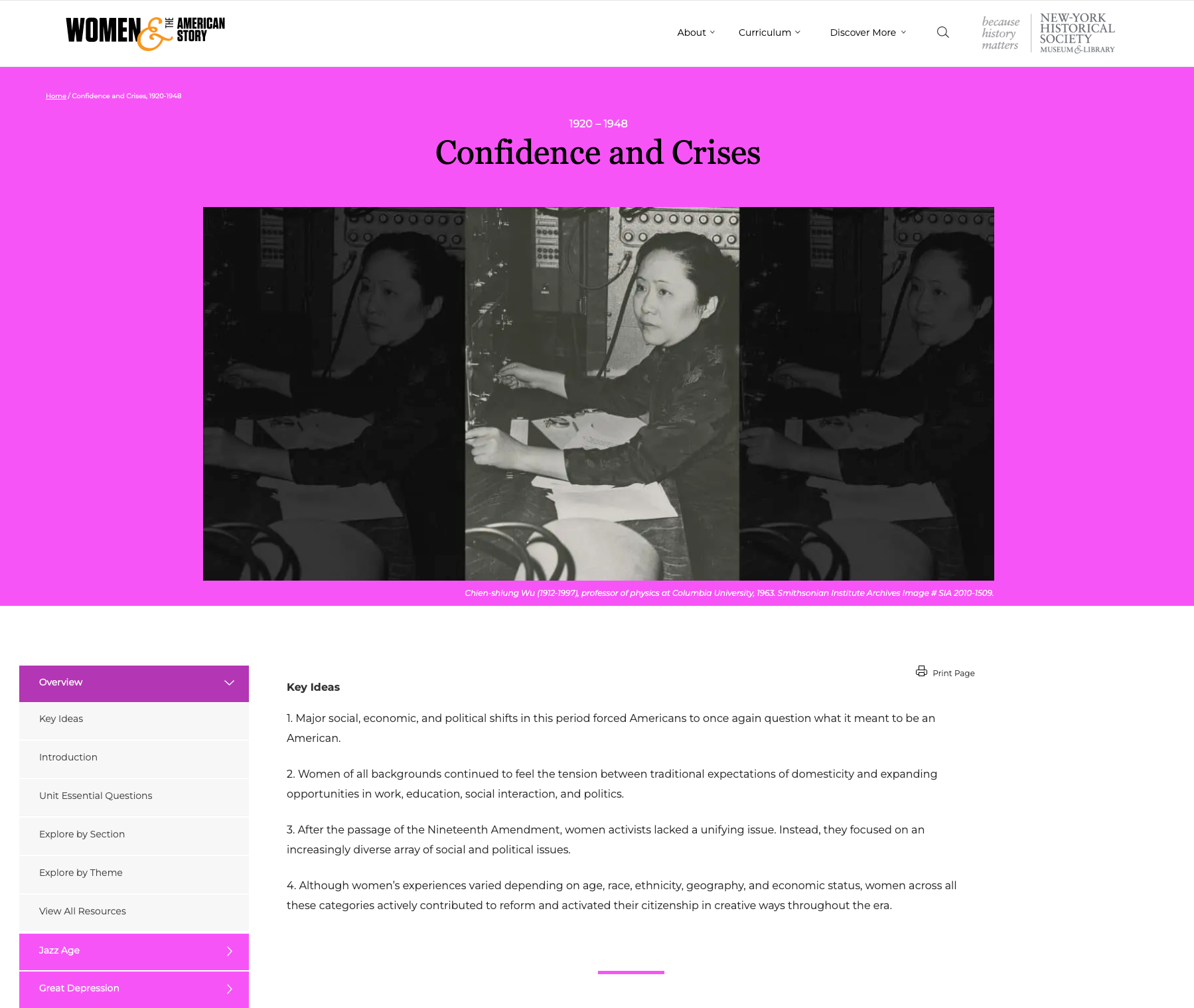 Confidence and Crises: Women and the American Story History Unit (1920-1948)
Confidence and Crises: Women and the American Story History Unit (1920-1948) Content wise, this unit goes best with High School USHG Eras 6, 7, and 8. There are opportunities for geography, economics, and civics integration.
-
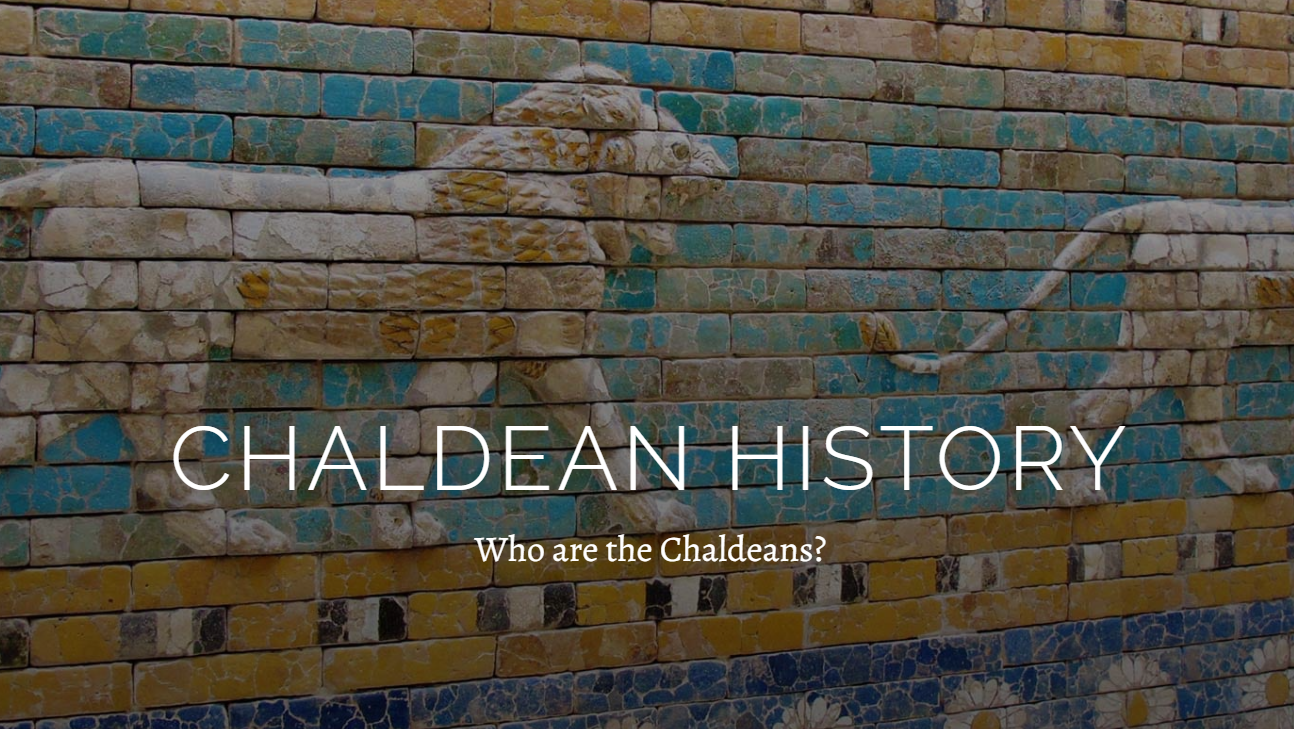 Chaldean History: Who are the Chaldeans?
Chaldean History: Who are the Chaldeans? A brief article outlining the over 5,500-year history of Chaldean people: from their beginnings in Mesopotamia to Metro Detroit becoming the second largest community of Chaldeans worldwide.
The article also includes information about language, religion, and demographics.
-
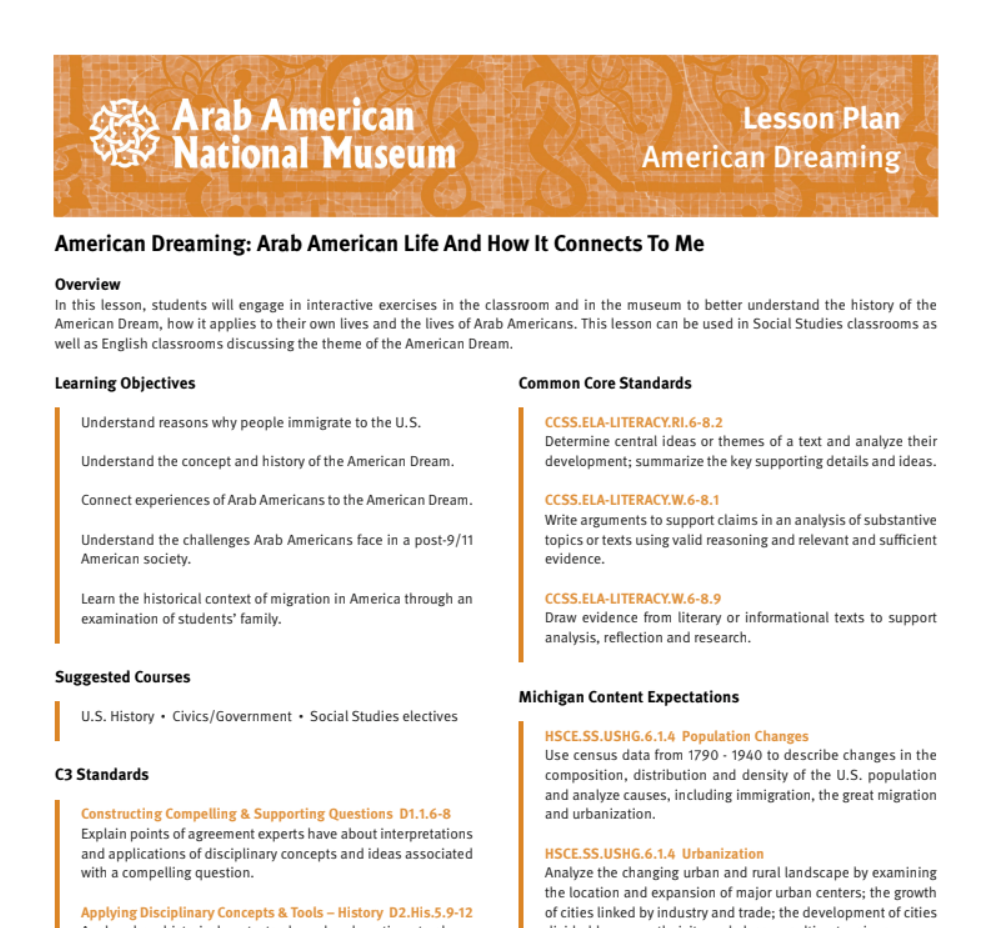 American Dreaming Lesson Plan
American Dreaming Lesson Plan
 Who Killed Vincent Chin: Civil Rights Activism USHG 8.3.4 Civil Rights Expanded – evaluate the major accomplishments and setbacks in securing civil rights and liberties for all Americans over the 20th century.
Who Killed Vincent Chin: Civil Rights Activism USHG 8.3.4 Civil Rights Expanded – evaluate the major accomplishments and setbacks in securing civil rights and liberties for all Americans over the 20th century. Understanding Arab Refugees Unit Plan
Understanding Arab Refugees Unit Plan  Settler Colonialism and the American Revolution: Women and the American Story History Unit (1692-1783) Content wise, this unit goes best with 3rd grade history and 5th grade USHG Eras 2 and 3. There are opportunities for geography, economics, and civics integration. Which standards are best will depend on the resources you include, how you include them, and the grade you teach. That said, we do recommend these resources for all grades to help develop historical thinking and inquiry skills described in the K - 12 standards.
Settler Colonialism and the American Revolution: Women and the American Story History Unit (1692-1783) Content wise, this unit goes best with 3rd grade history and 5th grade USHG Eras 2 and 3. There are opportunities for geography, economics, and civics integration. Which standards are best will depend on the resources you include, how you include them, and the grade you teach. That said, we do recommend these resources for all grades to help develop historical thinking and inquiry skills described in the K - 12 standards. Integrating Asian Pacific Islander Desi Americans (APIDA) in Your Everyday Teaching These slides are from a webinar by the Asian American Education Project aimed to help teachers integrate APIDA histories into their existing teaching. The slides share examples of APIDA inclusion into existing curriculum, pedagogical strategies to do so, and reflective questions to help K-12 history teachers probe their own teaching. Example teaching strategies/historical moments are: - Angel Island and Ellis Island - Japanese Incarceration during WWII, Treatment of Muslim Americans and South Asian Americans post 9/11, and U.S. Detention Facilities at the Border - Tape vs. Hurley and Brown vs. Board - Immigration Patterns of Southeast Asian refugees as a result of the Vietnam War - Lue Gim Gong saves Florida's Citrus Plants - Colonization of Hawai'i
Integrating Asian Pacific Islander Desi Americans (APIDA) in Your Everyday Teaching These slides are from a webinar by the Asian American Education Project aimed to help teachers integrate APIDA histories into their existing teaching. The slides share examples of APIDA inclusion into existing curriculum, pedagogical strategies to do so, and reflective questions to help K-12 history teachers probe their own teaching. Example teaching strategies/historical moments are: - Angel Island and Ellis Island - Japanese Incarceration during WWII, Treatment of Muslim Americans and South Asian Americans post 9/11, and U.S. Detention Facilities at the Border - Tape vs. Hurley and Brown vs. Board - Immigration Patterns of Southeast Asian refugees as a result of the Vietnam War - Lue Gim Gong saves Florida's Citrus Plants - Colonization of Hawai'i Growth and Turmoil: U.S. History Unit (1948–1977) Content wise, this unit goes best with High School USHG Eras 7 + 8. There are opportunities for geography, economics, and civics integration.
Growth and Turmoil: U.S. History Unit (1948–1977) Content wise, this unit goes best with High School USHG Eras 7 + 8. There are opportunities for geography, economics, and civics integration. End of the Twentieth Century Women and the American Story History Unit (1977-2001): A Conservative Turn Content wise, this unit goes best with High School USHG Eras 8+ 9. There are opportunities for geography, economics, and civics integration. Which standards are best will depend on the resources you include, how you include them, and the grade you teach. That said, we do recommend these resources for all grades to help develop historical thinking and inquiry skills described in the K - 12 standards.
End of the Twentieth Century Women and the American Story History Unit (1977-2001): A Conservative Turn Content wise, this unit goes best with High School USHG Eras 8+ 9. There are opportunities for geography, economics, and civics integration. Which standards are best will depend on the resources you include, how you include them, and the grade you teach. That said, we do recommend these resources for all grades to help develop historical thinking and inquiry skills described in the K - 12 standards. Early Encounters: Women and the American Story History Unit (1492-1734) Content wise, this unit goes best with 3rd Grade history and 5th grade USHG Eras 1 and 2. Which standards are best will depend on the resources you include, how you include them, and the grade you teach. That said, we do recommend these resources for all grades to help develop historical thinking and inquiry skills described in the K - 12 standards.
Early Encounters: Women and the American Story History Unit (1492-1734) Content wise, this unit goes best with 3rd Grade history and 5th grade USHG Eras 1 and 2. Which standards are best will depend on the resources you include, how you include them, and the grade you teach. That said, we do recommend these resources for all grades to help develop historical thinking and inquiry skills described in the K - 12 standards. Confidence and Crises: Women and the American Story History Unit (1920-1948) Content wise, this unit goes best with High School USHG Eras 6, 7, and 8. There are opportunities for geography, economics, and civics integration.
Confidence and Crises: Women and the American Story History Unit (1920-1948) Content wise, this unit goes best with High School USHG Eras 6, 7, and 8. There are opportunities for geography, economics, and civics integration. Chaldean History: Who are the Chaldeans? A brief article outlining the over 5,500-year history of Chaldean people: from their beginnings in Mesopotamia to Metro Detroit becoming the second largest community of Chaldeans worldwide. The article also includes information about language, religion, and demographics.
Chaldean History: Who are the Chaldeans? A brief article outlining the over 5,500-year history of Chaldean people: from their beginnings in Mesopotamia to Metro Detroit becoming the second largest community of Chaldeans worldwide. The article also includes information about language, religion, and demographics. American Dreaming Lesson Plan
American Dreaming Lesson Plan 